Flour, the powdery substance made from ground grains, is useful for baking and thickening sauces, but its nutrition is a mixed bag. Not all flours are created equal when it comes to its affect on your health. No flour is genuinely bad for you, but some are better for you than others. Look for whole grain flours for the biggest nutritional bang for your buck. Calorie and Fat Content Flour is quite caloric. A 1-cup serving of white flour, for instance, contains 495 calories while a cup of rye flour has 356 calories. It is not common to consume flour alone, however, so when you add a cup of flour to a recipe, your caloric intake from flour is reduced. The fat in flour is quite low. Servings of white flour and whole wheat flour have 2.2 g of fat each. Carbohydrates and Fiber The carbohydrates in flour directly impact your blood sugar level, so choosing flour with a low glycemic index is better for you. Breads made with whole grain flours have a glycemic index of approximately 7 to 9, while bread made from white flours range from 10 to 15 on the glycemic index. Eating white flour does not necessarily send you into insulin shock, but consuming wheat flour is healthier. White flour contains 99.3 g of carbohydrates and 3.3 g of fiber, while rye flour has 76.9 g of carbohydrates and 12 g of fiber. Choose whole grain flours to get more fiber in your diet. Protein Eating whole wheat flour is a good choice for protein. A 1-cup serving of this type of flour provides 16.4 g of protein. Even though white flour is the least healthy for you, it still contains protein necessary for muscle growth and energy -- a serving contains 16.4 g of protein. As a rule, you need 50 to 175 g of protein per day, so consider incorporating whole wheat flour into a pizza crust and topping it with ground beef or pepperoni to increase the protein in your diet. Vitamins All types of flour provide thiamin, a vitamin known as B-1. Enriched wheat flour is highest in thiamin, with 74 percent of the daily recommended intake. White, whole wheat and rye flours also contain folate, riboflavin and niacin as well as other healthy B vitamins. You also take in vitamin E and vitamin K in rye flour and whole wheat flour. Minerals Rye and whole wheat flours serve as excellent sources of manganese and selenium, but you can get a range of minerals in many flours, including calcium, zinc, iron and copper. This makes flour good for increasing bone density, producing red blood cells and boosting the health of your blood vessels. Read more: http://www.livestrong.com/article/446789-is-eating-flour-bad-for-you/#ixzz22Dm3vXjRSo from these it looks like flour in moderation is ok?well from what I've read from other sources, I think flour seems more like a food source that we should omit from our lifes altogether, let me start from here.
http://ecosalon.com/15_reasons_never_to_let_anyone_you_love_near_a_mcdonald_s/
This is a interesting article I read and thought Id share it with you, whats your opinions on the fast food chain mcdonalds? not just mcdonalds but all fast food chains.
What you are seeing here is my current profile, you will see all my stats, regarding weight, body fat measurements and measurements of arms, waist etc, it shows my current eating plan and how my body feels, looks internally and externally.
this was april 2012 , I will be making a new report for august and I will now begin to start making changes to my lifestyle and giving feedback on how it working.
 | fitness_report_april_2012.pages | | File Size: | 97 kb | | File Type: | pages |
Download File
Top 10 Foods Highest in Vitamin B12 (Cobalamin)
Vitamin B-12, or Cobalamin, is the largest and most complex vitamin currently known to man. A slight deficiency of vitamin B-12 can lead to anemia, fatigue, mania, and depression, while a long term deficiency can potentially cause permanent damage to the brain and central nervous system. Vitamin B-12 can only be manufactured by bacteria and can only be found naturally in animal products, however, synthetic forms are widely available and added to many foods like cereals. Vitamin B-12 can be consumed in large doses because excess is excreted by the body or stored in the liver for use when supplies are scarce. Stores of B-12 can last for up to a year. Below is a list of the top ten vitamin b12 rich foods. Click here for other foods high in vitamin b.
#1: Clams, Oysters, and Mussels
Shellfish are a great source of vitamin B12 and can be eaten raw, baked, steamed, fried, or made into chowder. In addition to vitamin B12 shellfish are a good source of zinc, copper, and iron. Clams provide the most vitamin B-12 with 98.9μg per 100g serving, accounting for 1648% of the DV. That is 84μg (1401% DV) per 3 ounce serving, and 187.9μg (3132% DV) in 20 small clams, or 9.4μg (156.6 %DV) in one small clam. Mussels and oysters are also good sources of B12 providing 600% DV and 400% DV per 100 gram serving. Click to see complete nutrition facts.
#2: Liver
Often appearing on the culinary scene as pâté, liver can also be prepared steamed or fried with onions and herbs. The liver of most any animal is packed with vitamin B-12, the highest on the list are: Lamb, beef, veal, moose, turkey, duck, and goose respectively. Lamb liver provides 85.7μg (1428% DV) of vitamin B12 per 100g serving, or 72.85μg (230% DV) in a 3 ounce serving. Click to see complete nutrition facts.
#3: Caviar (Fish Eggs)
Caviar and fish eggs are most often eaten as a garnish or spread. The eggs of whitefish contain the most vitamin B-12 with 56.4μg (940% DV) per 100g serving. Caviar contains a third of that with 20μg (333% DV) of vitamin B12 per 100g serving, 5.6μg (93% DV) per ounce, and 3.2μg (53% DV) per tablespoon. Chicken eggs, by comparison, only offer 1.29μg (22% DV) of vitamin B-12 per 100g serving, or 0.65μg (11% DV) per egg. Click to see complete nutrition facts. Buy Caviar from Amazon.com
#4: Octopus
Popular in Mediterranean, Japanese, and Hawaiian cuisine, octopus is a vitamin b12 rich food. Cooked octopus provides 36μg of vitamin B-12 per 100 gram serving accounting for 600% of the DV. That is 30.6μg (510% DV) per 3 ounce serving, or 10.2μg (170% DV) per ounce. Raw octopus provides about half as much vitamin b12 with 20μg (333% DV) per 100 gram serving, 17μg (283% DV) in a 3 ounce serving, and 5.67μg (94.33% DV) per ounce. Click to see complete nutrition facts.
#5: Fish
Known for their omega 3 fats and for being a high protein food, fish are also a good source of vitamin B12. Mackerel provides the most vitamin B-12 with 19μg per 100g serving (317% DV), followed by Herring (312% DV), Salmon (302%), Tuna (181%), Cod (167%), Sardines (149%), Trout (130%), and Bluefish (104%).
Click to see complete nutrition facts. Canned Fish Highest in Vitamin B12.
#6: Crab and Lobster
Crab and lobster are most commonly served baked, steamed, or in bisque. A 100g serving of crab contains 11.5μg of vitamin B12 (192% of the DV), that is 15.4μg (257%DV) per leg (134g). Lobster will provide 4.04μg(67% DV) per 100g serving, or 6.59μg (110% DV) in an average whole lobster (163g).
Click to see complete nutrition facts.
#7: Beef
In addition to being a vitamin B12 rich food, beef is also a good source of protein, zinc, and heme-iron. The amount of vitamin B-12 in beef depends on the cut, lean fat-trimmed chuck contains the most vitamin B12 with 6.18μg (103% DV) per 100g serving, 11.49μg (103% DV) in a chuck steak, and 5.25μg (88% DV) in a 3 ounce serving. Chuck is followed by sirloin (62% DV), rib-eye (60% DV), and ribs (58% DV).
Click to see complete nutrition facts.
#8: Lamb (Mutton)
Lamb is a common meat in the Middle East, Mediterranean, East Asia, Australia, New Zealand, and most of Europe. Lamb is a high cholesterol food so be sure to look for lean cuts which are higher in B12 anyway. Lamb also provides high amounts of protein, and zinc. The shoulder is the cut of lamb with the most vitamin B-12 providing 3.71μg (62% DV) per 100g serving, 5.82μg (97% DV) per pound, and 3.15μg (53% DV) in a 3 ounce serving. The shoulder is followed by the foreshank and leg which provides 53% of the DV per 100g serving, and lamb chops which provide 51% of the DV for vitmain B12 per 100 gram serving. Click to see complete nutrition facts.
#9: Cheese
Despite being a high cholesterol food, cheese is a good source of calcium, protein, and Riboflavin (Vitamin B2). The amount of vitamin B12 in cheese depends on type and variety, Swiss cheese provides the most with 3.34μg (56% DV) per 100g serving, followed by Gjetost (40% DV), Mozzarella(39% DV), Parmesan (38% DV), Tilsit (35% DV), and Feta (28% DV). Click to see complete nutrition facts.
#10: Eggs
When it comes to chicken eggs the raw yellow has most of the vitamin B-12 with 1.95μg per 100g serving (33%), however, this equates to 0.33μg per yolk or just 6% of the DV. The eggs of other animals are higher with a goose egg providing 7.34μg (122% DV) of vitamin B-12 per 100g serving, and a duck egg providing 3.78μg (63% DV).
Click to see complete nutrition facts.
Other Vitamin B12 Rich Foods
Fortified Cereals*
List of Cereals High in Vitamin B12 20μg (333% DV) per 100 gram serving 16μg (267% DV) in an average bowl (2 cups) (80 grams) 8μg (133% DV) per cup (40 grams) Click to see complete nutrition facts for Fortified Cereals
Liverwurst Sausage 13.46μg (224% DV) per 100 gram serving 2.42μg (40% DV) per slice (18 grams) 3.77μg (63% DV) per ounce (28 grams) Click to see complete nutrition facts for Liverwurst Sausage
Fortified Energy Bars* 12.24μg (204% DV) per 100 gram serving 5.39μg (90% DV) per bar (44 grams) 2.7μg (45% DV) in half a bar (22 grams) Click to see complete nutrition facts for Fortified Energy Bars
Fois Gras (Goose Liver Pâté) 9.4μg (157% DV) per 100 gram serving 1.22μg (20% DV) per tablespoon (13 grams) 2.63μg (44% DV) per ounce (28 grams) Click to see complete nutrition facts for Fois Gras (Goose Liver Pâté)
Emu Steak 9.37μg (156% DV) per 100 gram serving 36.92μg (615% DV) per tablespoon (394 grams) 7.96μg (133% DV) per ounce (85 grams) Click to see complete nutrition facts for Emu Steak
New England Clam Chowder 4.8μg (80% DV) per 100 gram serving 12.1μg (202% DV) per cup (252 grams) 1.54μg (26% DV) in a fluid ounce (32 grams) Click to see complete nutrition facts for New England Clam Chowder
Manhattan Clam Chowder 3.3μg (55% DV) per 100 gram serving 7.92μg (132% DV) per cup (240 grams) 0.99μg (17% DV) in a fluid ounce (30 grams) Click to see complete nutrition facts for Manhattan Clam Chowder
Luncheon Meat* 5.14μg (86% DV) per 100 gram serving 1.44μg (24% DV) per one ounce slice (28 grams) 2.88μg (48% DV) in two slices (56 grams) Click to see complete nutrition facts for Luncheon Meat
Hard Salami* 2.8μg (47% DV) per 100 gram serving 3.16μg (53% DV) in one 4 ounce package (113 grams) 0.28μg (5% DV) per slice (10 grams) Click to see complete nutrition facts for Hard Salami
Whey Powder 2.37μg (40% DV) per 100 gram serving 3.44μg (57% DV) per cup (145 grams) 0.19μg (3% DV) per tablespoon (8 grams) Click to see complete nutrition facts for Dry Sweet Whey
Yogurt (No Fat) 0.61μg (10% DV) per 100 gram serving 1.49μg (25% DV) per cup (8oz) (245 grams) 0.69μg (12% DV) per 4oz serving (half-container) (113 grams) Click to see complete nutrition facts for Plain Yogurt (No Fat)
Yogurt (Whole) 0.37μg (6% DV) per 100 gram serving 0.91μg (15% DV) per cup (8oz) (245 grams) 0.42μg (7% DV) per 4oz serving (half-container) (113 grams) Click to see complete nutrition facts for Plain Yogurt (Whole)
Skim Milk 0.53μg (9% DV) per 100 gram serving 1.3μg (22% DV) per cup (245 grams) 0.16μg (3% DV) in a fluid ounce (31 grams) Click to see complete nutrition facts for Non-Fat Milk
Whole Milk 0.44μg (7% DV) per 100 gram serving 1.07μg (18% DV) per cup (244 grams) 0.14μg (2% DV) in a fluid ounce (31 grams) Click to see complete nutrition facts for Full Fat Milk
Low-Fat Buttermilk 0.22μg (4% DV) per 100 gram serving 0.54μg (9% DV) per cup (245 grams) 0.07μg (1% DV) in a fluid ounce (31 grams) Click to see complete nutrition facts for Low-fat Buttermilk
Yeast Extract Spread (Marmite) 0.5μg (8% DV) per 100 gram serving 1.44μg (48% DV) per cup (288 grams) 0.03μg (1% DV) per teaspoon (6 grams) Click to see complete nutrition facts for Yeast Extract Spread
Cured Ham (Lean) 0.65μg (11% DV) per 100 gram serving 0.91μg (15% DV) per cup (140 grams) 0.55μg (9% DV) in a 3 ounce serving (85 grams) Click to see complete nutrition facts for Extra Lean Cured Ham
Chicken (Lean) 0.31μg (5% DV) per 100 gram serving 0.43μg (7% DV) per cup chopped (140 grams) 0.21μg (3% DV) in a half-cup (70 grams) Click to see complete nutrition facts for Lean Roasted Chicken
Fortified Soymilk* 1.11μg (19% DV) per 100 gram serving 2.7μg (45% DV) per cup (243 grams) 0.3μg (5% DV) per ounce (28 grams) Click to see complete nutrition facts for Fortified Soymilk
Fortified Tofu* 2.36μg (39% DV) per 100 gram serving 1.86μg (31% DV) per serving (1/4 packet) (79 grams) 0.7μg (11% DV) per ounce (28 grams) Click to see complete nutrition facts for Fortified Tofu
*Amount of vitamin B12 may vary greatly between products. Be sure to check nutrition labels for the exact amount of vitamin B12 from each individual product.
Health Benefits of Vitamin B12
Protect Against Heart Disease - Adequate levels of vitamins B12, B6, and B9 have been shown to lower levels of a protein in the blood: homocysteine. Lower levels of homocysteine has been shown to improve endothelial function, which in turn may boost cardiovascular health and decrease risk of heart attacks.3-5
Protect and Repair DNA to Reduce Cancer Risk and Slow Aging - Absorption of vitamin b12 and Folate (B9) is essential for DNA metabolism and maintenance which helps to prevent cancer and slow aging.6 Read full blog post here...
Protect Against Dementia and Cognitive Decline - Lack of vitamin B12 increases homocysteine levels, which in turn decreases the bodies ability to metabolize neurotransmitters.7 Due to limitations with creating long term controlled studies in human populations, no definite link between increased vitamin b12 levels and cognitive function have been found,8-12 however several observational studies suggest increased homocysteine levels increase the incidence of Alzheimer's disease and dementia,13-15 and low levels of vitamin B12 has been associated with cognitive decline.16
Alzheimer's Protection - A study has shown that a deficiency in Vitamin B12 and Folate (B9) can double the risk of Alzheimer's Disease.17
Energy and Endurance - A lack of vitamin B12 will lead to anemia and weakness. Adequate levels of vitamin B12 are necessary to maintain normal energy levels. Claims of vitamin B12 as an energy or atheletic enhancer remain unproven.18
People at Risk of a Vitamin B12 Deficiency
Older Adults who have Atrophic Gastritis - A condition affecting 30-50% of adults over age 50 and hampers their ability to absorb vitamin B12 from natural foods. Supplements are recommended for people in this group.
People with Pernicious Anemia - A condition that affects 1-2% of adults and can only effectively be treated with vitamin B12 injections or shots.
Vegans and Vegetarians - Vitamin B12 is naturally found in animal products, however there are some natural vegetarian foods high in vitamin b12 and various fortified B12 foods for vegans.
Pregnant and Lactating Women who are Vegetarian or Vegan
People taking Certain Medications
Proton pump inhibitors, such as omeprazole (Prilosec®) and lansoprazole (Prevacid®), which are used to treat gastric or pepetic ulcer disease can inhibit absorption of vitamin B12.
Metformin - often used for type II diabetes, may interfere with vitmain B12 absorption in certain people.
Histamine antagonists, such as cimetidine (Tagamet®), famotidine (Pepcid®), and ranitidine (Zantac®), used to treat peptic ulcer disease, can reduce absorption of vitmain B12 by slowing the release of hydrochloric acid into the stomach.
Bacteriostatic Antibiotics, like Chloramphenicol (Chloromycetin®), can interfere with the red blood cell response to vitamin b12 supplements.
Anticonvulsants - Anticonvulsants have been shown to interfere with vitamin B12 and vitamin B9 (Folate) metabolism.19-21 One study found that people taking folate supplements and anticonvulsants experienced a 50% decline in Vitamin B12 blood levels.
Warnings
Liver, Fois Gras, Whole Milk, Clam Chowder, Liverwurst, Salami, Cheese, Caviar, Lamb, Shell Fish, and Beef are high cholesterol foods which should be eaten in moderate amounts and avoided by people at risk of heart disease or stroke.
USDA National Nutrient Database for Standard Reference, Release 20.
Office Of Dietary Supplements Fact Sheet
Doshi SN, McDowell IF, Moat SJ, Payne N, Durrant HJ, Lewis MJ, Goodfellos J. Folic acid improves endothelial function in coronary artery disease via mechanisms largely independent of homocysteine. Circulation. 2002;105:22-6.
Doshi SN, McDowell IFW, Moat SJ, Lang D, Newcombe RG, Kredean MB, Lewis MJ, Goodfellow J. Folate improves endothelial function in coronary artery disease. Arterioscler Thromb Vasc Biol 2001;21:1196-1202.
Wald DS, Bishop L, Wald NJ, Law M, Hennessy E, Weir D, McPartlin J, Scott J. Randomized trial of folic acid supplementation and serum homocysteine levels. Arch Intern Med 2001;161:695-700.
A Paoloni-Giacobino, R Grimble, C Pichard. Genetics and nutrition. Clinical Nutrition Volume 22, Issue 5, Pages 429-435 (October 2003)
Hutto BR. Folate and cobalamin in psychiatric illness. Compr Psychiatry 1997;38:305-14.
Eussen SJ, de Groot LC, Joosten LW, Bloo RJ, Clarke R, Ueland PM, et al. Effect of oral vitamin B-12 with or without folic acid on cognitive function in older people with mild vitamin B-12 deficiency: a randomized, placebo-controlled trial. Am J Clin Nutr 2006;84:361-70.
Hvas AM, Juul S, Lauritzen L, Nexø E, Ellegaard J. No effect of vitamin B-12 treatment on cognitive function and depression: a randomized placebo controlled study. J Affect Disord 2004;81:269-73.
Vital Trial Collaborative Group. Effect of vitamins and aspirin on markers of platelet activation, oxidative stress and homocysteine in people at high risk of dementia. J Intern Med 2003; 254:67-75.
Kang JH, Cook N, Manson J, Buring JE, Albert CM, Grodstein F. A trial of B vitamins and cognitive function among women at high risk of cardiovascular disease. Am J Clin Nutr 2008;88:1602-10.
Aisen PS, Schneider LS, Sano M, Diaz-Arrastia R, van Dyck CH, Weiner MF, et al.; Alzheimer Disease Cooperative Study. High-dose B vitamin supplementation and cognitive decline in Alzheimer disease: a randomized controlled trial. JAMA 2008 ;300:1774-83.
Clarke R. B-vitamins and prevention of dementia. Proc Nutr Soc 2008;67:75-81.
Schulz RJ. Homocysteine as a biomarker for cognitive dysfunction in the elderly. Curr Opin Clin Nutr Metab Care 2007;10:718-23.
Seshadri S, Beiser A, Selhub J, Jacques PF, Rosenberg IH, D'Agostino RB, et al. Plasma homocysteine as a risk factor for dementia and Alzheimer's disease. N Engl J Med 2002;346:476-83.
Clarke R, Birks J, Nexo E, Ueland PM, Schneede J, Scott J, et al. Low vitamin B-12 status and risk of cognitive decline in older adults. Am J Clin Nutr 2007;86:1384-91.
Wang HX, Wahlin Å, Basun H, Fastbom J, Winblad B, Fratiglioni L. Vitamin B12 and folate in relation to the development of Alzheimer?s disease. Neurology May 8, 2001 vol. 56 no. 9 1188-1194.
Lukaski HC. Vitamin and mineral status: effects on physical performance. Nutrition 2004;20:632-44.
Patrick Kidd and David L. Mollin. Megaloblastic Anaemia and Vitamin-B12 Deficiency After Anticonvulsant Therapy. Br Med J. 1957 October 26; 2(5051): 974?976.
J.S. MALPAS, G.H. SPRAY, L.J. WITTS. Serum Folic-acid and Vitamin-Biz Levels in Anticonvulsant Therapy. British Medical Journal. 16 April 1966.
Richard Hunterb, Joanna Barnesb, and D. M. Matthews. EFFECT OF FOLIC-ACID SUPPLEMENT ON SERUM-VITAMIN-B12 LEVELS IN PATIENTS ON ANTICONVULSANTS. The Lancet, Volume 294, Issue 7622, 27 September 1969, Pages 666-667.
Effects of Smoking The harmful effects of smoking on the body and overall health of smokers presented in the list below, only begins to convey some of the short and long term side effects of smoking cigarettes. Quitting makes sense for many reasons but simply put: smoking kills and the effects of second hand smoke are also bad for the health of those around you. Harmful Health Effects of Smoking - Every year hundreds of thousands of people around the world die from diseases caused by smoking cigarettes - Smoking KILLS.
- One in two lifetime smokers will die from their habit. Half of these deaths will occur in middle age.
- Tobacco smoke also contributes to a number of cancers.
- The mixture of nicotine and carbon monoxide in each cigarette you smoke temporarily increases your heart rate and blood pressure, straining your heart and blood vessels.
- This can cause heart attacks and stroke. It slows your blood flow, cutting off oxygen to your feet and hands. Some smokers end up having their limbs
amputated. - Tar coats your lungs like soot in a chimney and causes cancer. A 20-a-day smoker breathes in up to a full cup (210 g) of tar in a year.
- Changing to low-tar cigarettes does not help because smokers usually take deeper puffs and hold the smoke in for longer, dragging the tar deeper into their lungs.
- Carbon monoxide robs your muscles, brain and body tissue of oxygen, making your whole body and especially your heart work harder. Over time, your airways swell up and let less air into your lungs.
- Smoking causes disease and is a slow way to die. The strain of smoking effects on the body often causes years of suffering.
- Emphysema for example is an illness that slowly rots your lungs. People with emphysema often get bronchitis again and again, and suffer lung and heart failure.
- Lung cancer from smoking is caused by the tar in tobacco smoke.
- Men who smoke are ten times more likely to die from lung cancer than non-smokers.
- Heart disease and strokes are also more common among smokers than non-smokers.
- Smoking causes fat deposits to narrow and block blood vessels which leads to heart attack.
- Smoking causes around one in five deaths from heart disease.
- In younger people, three out of four deaths from heart disease are due to smoking
- Cigarette smoking during pregnancy increases the risk of low birth weight, prematurity, spontaneous abortion, and perinatal mortality in humans, which has been referred to as the fetal tobacco syndrome.
As mentioned earlier, this list can only begin to convey some of the long and short term effects of smoking cigarettes. We know that smoking kills and that quitting makes sense but what about the the effect on others? SMOKING IT KILLS !!! By Vivek Sonasaria Smoking it kills for sure. Smoking reduces your stamina, it make you feel tired and defenseless. Out of addiction one smoke again and again but slowly slowly it capture on your heart and lungs. It make a male impotent and female has chances to lose their fertility. I am not good at writing thing but still i have tried some, to show different type of effects of smoking. Head to toe - smoking effects can be seen on each part of your body. Let's go step by step and find out the dangerous smoking effects on your body. Hair Let's begin from the top i.e. your hair. Smoking effects can be felt on your hair. You hair becomes smelly and stained due to instant smoking effects. Slow hair growth, thinning and graying of hair is also believed to be a direct smoking effect. Your hair will look and feel lifeless and dull. Brain Smoking effects on brain are highly dangerous. Blockage of carotid artery may cut off the blood supply to the brain cells, which results in stroke (cerebral thrombosis). Blood thickening and clotting are also serious smoking effects and smokers are 1.5 times more likely to have stroke as compared to non-smokers. Eyes Dangerous smoking effects on eyes include common eye diseases such as Graves' ophthalmopathy, age- related mascular degeneration, glaucoma and cataract. The worst smoking effect on eyes can be permanent blindness. Nose Smoking effects on your nose can rob you of your sense of smell. Teeth and Gums Do you ever wonder why your teeth are so yellow and stained? Do your gums bleed every morning you wake up? Well, it's because of the direct smoking effect on your teeth. Also smoking effects are not limited to the appearance of your teeth but also results in plaque, loose teeth, gum disease and gingivitis. Mouth and Throat All cancers associated with the larynx, oral cavity and esophagus are fatal smoking effects. The less dangerous smoking effects are reduced sense of taste, sore throat and smelly breath. Hands Poor blood circulation which leads to cold fingers, tar stained fingers, peripheral vascular disease and amputation due to gangrene are some of the heart-wrenching smoking effects. Lungs and Respiratory System The most dreaded lung cancer, feeling out of breath, colds and flu, pneumonia, asthma, cough and sputum, tuberculosis, chronic obstructive pulmonary disease, chronic bronchitis and emphysema, phew... are all smoking effects which will more or less make your life hell. Heart Two immediate smoking effects on heart and circulation are an increase in your heartbeat rate and a sharp rise in blood pressure. Long term smoking effects are increase in the blood cholesterol and fibrinogen levels and increase in chances of having a heart attack. Smoking effects on your heart leads to coronary heart disease, aneurysm, peripheral vascular disease, stroke etc. Digestive System Smoking effects are heartburn, peptic ulcers, Crohn's disease, gallstones and stomach cancer. Skin Wrinkles, capillaries and premature ageing and scarring are few smoking effects on skin. Legs and Feet Beurger's disease, leg pain and gangrene are painful smoking effects. PEOPLE ARE QUITTING SMOKING, TO LIVE A HAPPIER, LONGER, HEALTHIER LIFE, WHEN WILL YOU!!!! 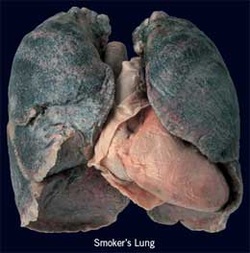 Smoking produces smoke (surprise!) which is inhaled by smokers. The smoke carries a host of terrible terrible chemicals as well as being... well, smoke. In a smokers lungs the nicotine is absorbed by lung tissue to give a slight buzz. Unfortunatly the smoke and other chemicals do damage to a smokers lungs by harming its natural cleaning systems. Ciggarette smoke also leaves a layer of tar on the inside of smokers lungs. A year of smoking 1 pack a day (20 ciggarettes) leaves the equivalant of one cup of tar in your lung!! EWWWWWW!! The lungs are arguable affected most but nearly every system in your body is negitivly affected. Nicotine makes blood vessels shrink in diameter, which makes your heart need to work harder. Your skin begins to worsen because it cannot get enough oxygen through the smaller blood vessels. The blood itself is affected because carbon monoxide from smoke passes immediately into the bloodstream, further lessening the bloods ability to carry oxygen. Read more: http://greenanswers.com/q/205543/health-wellness/general-health/why-smoking-so-bad-you#ixzz22DwkDbLo
 Many smokers are of the view that smoking is only limited to them. They are at fault and forget that every other person within their family, their house and their society is getting infected with this smoke. The impacts of the cigarette and smoking are not just related to the people, the outer environment is also getting affected with this dreadful thing. This reason is enough to inform any smoker as why quit smoking is essential for everyone besides this own self.
Smoking effects babies
Children are at much harm as far as the smoking is concerned. The phenomena of second hand smoking are better to discuss. When anyone within family smokes, they are infecting their kids with the smoke. The immunity systems of the kids are not well developed and organized. They easily fall victim to the harmful effects of cigarette and smoking.
Many diseases can originate and start among kids due to smoking, however many crucial and harmful problems are respiratory problems, cardiovascular infections and ear problems.
Cigarette contains around 4000 harmful chemicals and all such chemicals are like poisonous for kids. Nicotine, carbon monoxide, tar and carcinogen are the few names in this category. Carbon monoxide is so dangerous that it even replaces the oxygen from the blood stream and reaches all other body parts thus leading to the deficiency of oxygen. It eventually becomes the start of the main problem among many children. Cardiovascular problem arises when heart finds it hard to compensate for the loss of oxygen. It starts to pump hard and thus puts more pressure. Heart attack and many other heart problems start right from this point.
Nicotine is the main substance which causes an addiction to smoking habit. Besides addiction, it also changes mood of a person, thus when a child starts smoking, he is inviting many lungs and stomach problem inside him. Such child may also get addicted to the other forms of drugs like heroin and cocaine.
Many respiratory problems are also one of the causes of smoking. When smoke enters the body of any child, it goes into the lungs and thus destroys them. Bronchi and the air sacs are the main areas which are responsible for the inhalation and exhalation of the fresh air. When smoke surrounds lungs, it becomes difficult for the air sacs to work properly. Lungs don’t get enough space to expand fully. This way many lungs and respiratory problems are raised.
Many forms of cancers are also linked with the smoking. Tobacco causes mouth to go dry and thus leads to mouth cancer. It can also lead to throat, oesophagus, stomach and intestinal problems. All problem start from the mouth cavity.
The impacts of the second hand smoking are more on kids. According to the study, 85 percent of the kids fall victim to the second hand smoking and thus develop ear infection.
Children must be kept away from the direct as well as indirect effects of smoking.
People may smoke to look cool. People may smoke because of peer pressure, because they want to hang out with friends who take cigarette breaks and you don't want to appear different. Or people may be unable to stop smoking because they are too addicted. Smoking has extremely negative effects, especially on a health and appearance. Smoking affects not only the smoker, but also those in his or her proximity. - Smoking is Bad for Your Long-term Health
- The U.S. Centers for Disease Control and Prevention says smoking is the leading cause of fatal lung disease and can also lead to various cancers, coronary heart disease, strokes and reduced blood circulation.
Smoking is Hazardous to Other People's Long-term Health - According to the U.S. Surgeon General, breathing other people's smoke, known as secondhand smoke, can shorten a person's lifespan. Secondhand smoke also causes cancers and respiratory diseases in both children and adults. In fact, secondhand smoke often contains more cancer-causing and toxic chemicals than those found in smoke a person inhales himself.
Smoking Can Repel Non-smokers - A non-smoker may see your smoking as off-putting. How would you feel if you were around a person who smelled terrible all the time and blew nasty-smelling air around you? A smoker may lose out on dating opportunities or chances to make new friends among non-smokers who detest the habit.
Smoking Makes You and Others Smell Bad - Smoking makes your breath smell like an ashtray. Smoke also tends to cling to clothing. Spending time in a bar or restaurant that allows smoking in a non-ventilated area will make a person smell like an ashtray at the end of the night, even if that person did not smoke.
Smoking Can Hinder Breathing - Smoking can make breathing difficult. Smokers often have coughing fits, even when not actually smoking. Furthermore, inhaling secondhand smoke can make breathing difficult. Furthermore, it can spark and worsen symptoms of asthma attacks in children, according to the U.S. Environmental Protection Agency.
Smoking Harms Fetuses - Smoking can have a negative effect on a woman's unborn child. If a pregnant woman smokes during her pregnancy or inhales someone else's smoke constantly, she can pass unwanted prenatal diseases to the fetus. Kicking a smoking habit in your first trimester of a pregnancy could lower a woman's risk for delivering a preterm or small-for-gestational-age baby, a 2009 study published in the Obstetrics & Gynecology medical journal found.
Smoking Can Cause Oral Problems - Smoking can make a person lose teeth. People with gum disease who quit smoking during their dental treatments showed more symptoms of recovery, according to a 2005 study by the University of Newcastle upon Tyne, UK.
Smoking is Bad for Your Skin - Smoking increases a person's risk of developing wrinkles on her face. A 2008 Israeli study, published in the International Journal of Dermatology, found facial wrinkling was more likely to be seen among smokers than among nonsmokers.
Smoking Discolors Walls - Smoke stains walls. If a smoker plans on selling your house and has smoked at home regularly, he may want to consider painting the walls.
Smoking is addictive - It is difficult to quit smoking. Nicotine is a addictive drug and quitting it can lead to unpleasant symptoms of withdrawal. Smokers who have recently kicked the habit are often irritable or angry, may shake a lot and get headaches.
Read more: 10 Reasons Why Smoking Is Bad | eHow.com http://www.ehow.com/list_5481530_reasons-smoking-bad.html#ixzz22DyEfBJk
"MILK" Just the word itself sounds comforting! "How about a nice cup of hot milk?" The last time you heard that question it was from someone who cared for you--and you appreciated their effort. The entire matter of food and especially that of milk is surrounded with emotional and cultural importance. Milk was our very first food. If we were fortunate it was our mother's milk. A loving link, given and taken. It was the only path to survival. If not mother's milk it was cow's milk or soy milk "formula"--rarely it was goat, camel or water buffalo milk. Now, we are a nation of milk drinkers. Nearly all of us. Infants, the young, adolescents, adults and even the aged. We drink dozens or even several hundred gallons a year and add to that many pounds of "dairy products" such as cheese, butter, and yogurt. Can there be anything wrong with this? We see reassuring images of healthy, beautiful people on our television screens and hear messages that assure us that, "Milk is good for your body." Our dieticians insist that: "You've got to have milk, or where will you get your calcium?" School lunches always include milk and nearly every hospital meal will have milk added. And if that isn't enough, our nutritionists told us for years that dairy products make up an "essential food group." Industry spokesmen made sure that colourful charts proclaiming the necessity of milk and other essential nutrients were made available at no cost for schools. Cow's milk became "normal." You may be surprised to learn that most of the human beings that live on planet Earth today do not drink or use cow's milk. Further, most of them can't drink milk because it makes them ill. There are students of human nutrition who are not supportive of milk use for adults. Here is a quotation from the March/April 1991 Utne Reader: If you really want to play it safe, you may decide to join the growing number of Americans who are eliminating dairy products from their diets altogether. Although this sounds radical to those of us weaned on milk and the five basic food groups, it is eminently viable. Indeed, of all the mammals, only humans--and then only a minority, principally Caucasians--continue to drink milk beyond babyhood. Who is right? Why the confusion? Where best to get our answers? Can we trust milk industry spokesmen? Can you trust any industry spokesmen? Are nutritionists up to date or are they simply repeating what their professors learned years ago? What about the new voices urging caution? I believe that there are three reliable sources of information. The first, and probably the best, is a study of nature. The second is to study the history of our own species. Finally we need to look at the world's scientific literature on the subject of milk. Let's look at the scientific literature first. From 1988 to 1993 there were over 2,700 articles dealing with milk recorded in the 'Medicine' archives. Fifteen hundred of theses had milk as the main focus of the article. There is no lack of scientific information on this subject. I reviewed over 500 of the 1,500 articles, discarding articles that dealt exclusively with animals, esoteric research and inconclusive studies. How would I summarize the articles? They were only slightly less than horrifying. First of all, none of the authors spoke of cow's milk as an excellent food, free of side effects and the 'perfect food' as we have been led to believe by the industry. The main focus of the published reports seems to be on intestinal colic, intestinal irritation, intestinal bleeding, anemia, allergic reactions in infants and children as well as infections such as salmonella. More ominous is the fear of viral infection with bovine leukemia virus or an AIDS-like virus as well as concern for childhood diabetes. Contamination of milk by blood and white (pus) cells as well as a variety of chemicals and insecticides was also discussed. Among children the problems were allergy, ear and tonsillar infections, bedwetting, asthma, intestinal bleeding, colic and childhood diabetes. In adults the problems seemed centered more around heart disease and arthritis, allergy, sinusitis, and the more serious questions of leukemia, lymphoma and cancer. I think that an answer can also be found in a consideration of what occurs in nature & what happens with free living mammals and what happens with human groups living in close to a natural state as 'hunter-gatherers'. Our paleolithic ancestors are another crucial and interesting group to study. Here we are limited to speculation and indirect evidences, but the bony remains available for our study are remarkable. There is no doubt whatever that these skeletal remains reflect great strength, muscularity (the size of the muscular insertions show this), and total absence of advanced osteoporosis. And if you feel that these people are not important for us to study, consider that today our genes are programming our bodies in almost exactly the same way as our ancestors of 50,000 to 100,000 years ago. WHAT IS MILK? Milk is a maternal lactating secretion, a short term nutrient for new-borns. Nothing more, nothing less. Invariably, the mother of any mammal will provide her milk for a short period of time immediately after birth. When the time comes for 'weaning', the young offspring is introduced to the proper food for that species of mammal. A familiar example is that of a puppy. The mother nurses the pup for just a few weeks and then rejects the young animal and teaches it to eat solid food. Nursing is provided by nature only for the very youngest of mammals. Of course, it is not possible for animals living in a natural state to continue with the drinking of milk after weaning. IS ALL MILK THE SAME? Then there is the matter of where we get our milk. We have settled on the cow because of its docile nature, its size, and its abundant milk supply. Somehow this choice seems 'normal' and blessed by nature, our culture, and our customs. But is it natural? Is it wise to drink the milk of another species of mammal? Consider for a moment, if it was possible, to drink the milk of a mammal other than a cow, let's say a rat. Or perhaps the milk of a dog would be more to your liking. Possibly some horse milk or cat milk. Do you get the idea? Well, I'm not serious about this, except to suggest that human milk is for human infants, dogs' milk is for pups, cows' milk is for calves, cats' milk is for kittens, and so forth. Clearly, this is the way nature intends it. Just use your own good judgement on this one. Milk is not just milk. The milk of every species of mammal is unique and specifically tailored to the requirements of that animal. For example, cows' milk is very much richer in protein than human milk. Three to four times as much. It has five to seven times the mineral content. However, it is markedly deficient in essential fatty acids when compared to human mothers' milk. Mothers' milk has six to ten times as much of the essential fatty acids, especially linoleic acid. (Incidentally, skimmed cow's milk has no linoleic acid). It simply is not designed for humans. Food is not just food, and milk is not just milk. It is not only the proper amount of food but the proper qualitative composition that is critical for the very best in health and growth. Biochemists and physiologists -and rarely medical doctors - are gradually learning that foods contain the crucial elements that allow a particular species to develop its unique specializations. Clearly, our specialization is for advanced neurological development and delicate neuromuscular control. We do not have much need of massive skeletal growth or huge muscle groups as does a calf. Think of the difference between the demands make on the human hand and the demands on a cow's hoof. Human new-borns specifically need critical material for their brains, spinal cord and nerves. Can mother's milk increase intelligence? It seems that it can. In a remarkable study published in Lancet during 1992 (Vol. 339, p. 261-4), a group of British workers randomly placed premature infants into two groups. One group received a proper formula, the other group received human breast milk. Both fluids were given by stomach tube. These children were followed up for over 10 years. In intelligence testing, the human milk children averaged 10 IQ points higher! Well, why not? Why wouldn't the correct building blocks for the rapidly maturing and growing brain have a positive effect? In the American Journal of Clinical Nutrition (1982) Ralph Holman described an infant who developed profound neurological disease while being nourished by intravenous fluids only. The fluids used contained only linoleic acid - just one of the essential fatty acids. When the other, alpha linoleic acid, was added to the intravenous fluids the neurological disorders cleared. In the same journal five years later Bjerve, Mostad and Thoresen, working in Norway found exactly the same problem in adult patients on long term gastric tube feeding. In 1930 Dr. G.O. Burr in Minnesota working with rats found that linoleic acid deficiencies created a deficiency syndrome. Why is this mentioned? In the early 1960s pediatricians found skin lesions in children fed formulas without the same linoleic acid. Remembering the research, the addition of the acid to the formula cured the problem. Essential fatty acids are just that and cows' milk is markedly deficient in these when compared to human milk. WELL, AT LEAST COW'S MILK IS PURE Or is it? Fifty years ago an average cow produced 2,000 pounds of milk per year. Today the top producers give 50,000 pounds! How was this accomplished? Drugs, antibiotics, hormones, forced feeding plans and specialized breeding; that's how. The latest high-tech onslaught on the poor cow is bovine growth hormone or BGH. This genetically engineered drug is supposed to stimulate milk production but, according to Monsanto, the hormone's manufacturer, does not affect the milk or meat. There are three other manufacturers: Upjohn, Eli Lilly, and American Cyanamid Company. Obviously, there have been no long-term studies on the hormone's effect on the humans drinking the milk. Other countries have banned BGH because of safety concerns. One of the problems with adding molecules to a milk cows' body is that the molecules usually come out in the milk. I don't know how you feel, but I don't want to experiment with the ingestion of a growth hormone. A related problem is that it causes a marked increase (50 to 70 per cent) in mastitis. This, then, requires antibiotic therapy, and the residues of the antibiotics appear in the milk. It seems that the public is uneasy about this product and in one survey 43 per cent felt that growth hormone treated milk represented a health risk. A vice president for public policy at Monsanto was opposed to labelling for that reason, and because the labelling would create an 'artificial distinction'. The country is awash with milk as it is, we produce more milk than we can consume. Let's not create storage costs and further taxpayer burdens, because the law requires the USDA to buy any surplus of butter, cheese, or non-fat dry milk at a support price set by Congress! In fiscal 1991, the USDA spent $757 million on surplus butter, and one billion dollars a year on average for price supports during the 1980s (Consumer Reports, May 1992: 330-32). Any lactating mammal excretes toxins through her milk. This includes antibiotics, pesticides, chemicals and hormones. Also, all cows' milk contains blood! The inspectors are simply asked to keep it under certain limits. You may be horrified to learn that the USDA allows milk to contain from one to one and a half million white blood cells per millilitre. (That's only 1/30 of an ounce). If you don't already know this, I'm sorry to tell you that another way to describe white cells where they don't belong would be to call them pus cells. To get to the point, is milk pure or is it a chemical, biological, and bacterial cocktail? Finally, will the Food and Drug Administration (FDA) protect you? The United States General Accounting Office (GAO) tells us that the FDA and the individual States are failing to protect the public from drug residues in milk. Authorities test for only 4 of the 82 drugs in dairy cows. As you can imagine, the Milk Industry Foundation's spokesman claims it's perfectly safe. Jerome Kozak says, "I still think that milk is the safest product we have." Other, perhaps less biased observers, have found the following: 38% of milk samples in 10 cities were contaminated with sulfa drugs or other antibiotics. (This from the Centre for Science in the Public Interest and The Wall Street Journal, Dec. 29, 1989).. A similar study in Washington, DC found a 20 percent contamination rate (Nutrition Action Healthletter, April 1990). What's going on here? When the FDA tested milk, they found few problems. However, they used very lax standards. When they used the same criteria, the FDA data showed 51 percent of the milk samples showed drug traces. Let's focus in on this because it’s critical to our understanding of the apparent discrepancies. The FDA uses a disk-assay method that can detect only 2 of the 30 or so drugs found in milk. Also, the test detects only at the relatively high level. A more powerful test called the 'Charm II test' can detect drugs down to 5 parts per billion. One nasty subject must be discussed. It seems that cows are forever getting infections around the udder that require ointments and antibiotics. An article from France tells us that when a cow receives penicillin, that penicillin appears in the milk for from 4 to 7 milkings. Another study from the University of Nevada, Reno tells of cells in 'mastic milk', milk from cows with infected udders. An elaborate analysis of the cell fragments, employing cell cultures, flow cytometric analysis , and a great deal of high tech stuff. Do you know what the conclusion was? If the cow has mastitis, there is pus in the milk. Sorry, it’s in the study, all concealed with language such as "macrophages containing many vacuoles and phagocytosed particles," etc. IT GETS WORSE Well, at least human mothers' milk is pure! Sorry. A huge study showed that human breast milk in over 14,000 women had contamination by pesticides! Further, it seems that the sources of the pesticides are meat and--you guessed it-- dairy products. Well, why not? These pesticides are concentrated in fat and that's what's in these products. (Of interest, a subgroup of lactating vegetarian mothers had only half the levels of contamination). A recent report showed an increased concentration of pesticides in the breast tissue of women with breast cancer when compared to the tissue of women with fibrocystic disease. Other articles in the standard medical literature describe problems. Just scan these titles: 1.Cow's Milk as a Cause of Infantile Colic Breast-Fed Infants. Lancet 2 (1978): 437 2.Dietary Protein-Induced Colitis in Breast- Fed Infants, J. Pediatr. I01 (1982): 906 3.The Question of the Elimination of Foreign Protein in Women's Milk, J. Immunology 19 (1930): 15 There are many others. There are dozens of studies describing the prompt appearance of cows' milk allergy in children being exclusively breast-fed! The cows' milk allergens simply appear in the mother's milk and are transmitted to the infant. A committee on nutrition of the American Academy of Pediatrics reported on the use of whole cows' milk in infancy (Pediatrics 1983: 72-253). They were unable to provide any cogent reason why bovine milk should be used before the first birthday yet continued to recommend its use! Doctor Frank Oski from the Upstate Medical Centre Department of Pediatrics, commenting on the recommendation, cited the problems of acute gastrointestinal blood loss in infants, the lack of iron, recurrent abdominal pain, milk- borne infections and contaminants, and said: Why give it at all - then or ever? In the face of uncertainty about many of the potential dangers of whole bovine milk, it would seem prudent to recommend that whole milk not be started until the answers are available. Isn't it time for these uncontrolled experiments on human nutrition to come to an end? In the same issue of Pediatrics he further commented: It is my thesis that whole milk should not be fed to the infant in the first year of life because of its association with iron deficiency anemia (milk is so deficient in iron that an infant would have to drink an impossible 31 quarts a day to get the RDA of 15 mg), acute gastrointiestinal bleeding, and various manifestations of food allergy. I suggest that unmodified whole bovine milk should not be consumed after infancy because of the problems of lactose intolerance, its contribution to the genesis of atherosclerosis, and its possible link to other diseases. In late 1992 Dr. Benjamin Spock, possibly the best known pediatrician in history, shocked the country when he articulated the same thoughts and specified avoidance for the first two years of life. Here is his quotation: I want to pass on the word to parents that cows' milk from the carton has definite faults for some babies. Human milk is the right one for babies. A study comparing the incidence of allergy and colic in the breast-fed infants of omnivorous and vegan mothers would be important. I haven't found such a study; it would be both important and inexpensive. And it will probably never be done. There is simply no academic or economic profit involved. OTHER PROBLEMS Let's just mention the problems of bacterial contamination. Salmonella, E. coli, and staphylococcal infections can be traced to milk. In the old days tuberculosis was a major problem and some folks want to go back to those times by insisting on raw milk on the basis that it's "natural." This is insanity! A study from UCLA showed that over a third of all cases of salmonella infection in California, 1980-1983 were traced to raw milk. That'll be a way to revive good old brucellosis again and I would fear leukemia, too. (More about that later). In England, and Wales where raw milk is still consumed there have been outbreaks of milk-borne diseases. The Journal of the American Medical Association (251: 483, 1984) reported a multi-state series of infections caused by Yersinia enterocolitica in pasteurised whole milk. This is despite safety precautions. All parents dread juvenile diabetes for their children. A Canadian study reported in the American Journal of Clinical Nutrition, Mar. 1990, describes a "...significant positive correlation between consumption of unfermented milk protein and incidence of insulin dependent diabetes mellitus in data from various countries. Conversely a possible negative relationship is observed between breast-feeding at age 3 months and diabetes risk.". Another study from Finland found that diabetic children had higher levels of serum antibodies to cows’ milk (Diabetes Research 7(3): 137-140 March 1988). Here is a quotation from this study: We infer that either the pattern of cows' milk consumption is altered in children who will have insulin dependent diabetes mellitus or, their immunological reactivity to proteins in cows' milk is enhanced, or the permeability of their intestines to cows' milk protein is higher than normal. The April 18, 1992 British Medical Journal has a fascinating study contrasting the difference in incidence of juvenile insulin dependent diabetes in Pakistani children who have migrated to England. The incidence is roughly 10 times greater in the English group compared to children remaining in Pakistan! What caused this highly significant increase? The authors said that "the diet was unchanged in Great Britain." Do you believe that? Do you think that the availability of milk, sugar and fat is the same in Pakistan as it is in England? That a grocery store in England has the same products as food sources in Pakistan? I don't believe that for a minute. Remember, we're not talking here about adult onset, type II diabetes which all workers agree is strongly linked to diet as well as to a genetic predisposition. This study is a major blow to the "it's all in your genes" crowd. Type I diabetes was always considered to be genetic or possibly viral, but now this? So resistant are we to consider diet as causation that the authors of the last article concluded that the cooler climate in England altered viruses and caused the very real increase in diabetes! The first two authors had the same reluctance top admit the obvious. The milk just may have had something to do with the disease. The latest in this remarkable list of reports, a New England Journal of Medicine article (July 30, 1992), also reported in the Los Angeles Times. This study comes from the Hospital for Sick Children in Toronto and from Finnish researchers. In Finland there is "...the world's highest rate of dairy product consumption and the world's highest rate of insulin dependent diabetes. The disease strikes about 40 children out of every 1,000 there contrasted with six to eight per 1,000 in the United States.... Antibodies produced against the milk protein during the first year of life, the researchers speculate, also attack and destroy the pancreas in a so-called auto-immune reaction, producing diabetes in people whose genetic makeup leaves them vulnerable." "...142 Finnish children with newly diagnosed diabetes. They found that every one had at least eight times as many antibodies against the milk protein as did healthy children, clear evidence that the children had a raging auto immune disorder." The team has now expanded the study to 400 children and is starting a trial where 3,000 children will receive no dairy products during the first nine months of life. "The study may take 10 years, but we'll get a definitive answer one way or the other," according to one of the researchers. I would caution them to be certain that the breast feeding mothers use on cows' milk in their diets or the results will be confounded by the transmission of the cows' milk protein in the mother's breast milk.... Now what was the reaction from the diabetes association? This is very interesting! Dr. F. Xavier Pi-Sunyer, the president of the association says: "It does not mean that children should stop drinking milk or that parents of diabetics should withdraw dairy products. These are rich sources of good protein." (Emphasis added) My God, it's the "good protein" that causes the problem! Do you suspect that the dairy industry may have helped the American Diabetes Association in the past? LEUKEMIA? LYMPHOMA? THIS MAY BE THE WORST--BRACE YOURSELF! I hate to tell you this, but the bovine leukemia virus is found in more than three of five dairy cows in the United States! This involves about 80% of dairy herds. Unfortunately, when the milk is pooled, a very large percentage of all milk produced is contaminated (90 to 95 per cent). Of course the virus is killed in pasteurisation-- if the pasteurisation was done correctly. What if the milk is raw? In a study of randomly collected raw milk samples the bovine leukemia virus was recovered from two-thirds. I sincerely hope that the raw milk dairy herds are carefully monitored when compared to the regular herds. (Science 1981; 213:1014). This is a world-wide problem. One lengthy study from Germany deplored the problem and admitted the impossibility of keeping the virus from infected cows' milk from the rest of the milk. Several European countries, including Germany and Switzerland, have attempted to "cull" the infected cows from their herds. Certainly the United States must be the leader in the fight against leukemic dairy cows, right? Wrong! We are the worst in the world with the former exception of Venezuela according to Virgil Hulse MD, a milk specialist who also has a B.S. in Dairy Manufacturing as well as a Master's degree in Public Health. As mentioned, the leukemia virus is rendered inactive by pasteurisation. Of course. However, there can be Chernobyl like accidents. One of these occurred in the Chicago area in April, 1985. At a modern, large, milk processing plant an accidental "cross connection" between raw and pasteurized milk occurred. A violent salmonella outbreak followed, killing 4 and making an estimated 150,000 ill. Now the question I would pose to the dairy industry people is this: "How can you assure the people who drank this milk that they were not exposed to the ingestion of raw, unkilled, bully active bovine leukemia viruses?" Further, it would be fascinating to know if a "cluster" of leukemia cases blossoms in that area in 1 to 3 decades. There are reports of "leukemia clusters" elsewhere, one of them mentioned in the June 10, 1990 San Francisco Chronicle involving Northern California. What happens to other species of mammals when they are exposed to the bovine leukemia virus? It's a fair question and the answer is not reassuring. Virtually all animals exposed to the virus develop leukemia. This includes sheep, goats, and even primates such as rhesus monkeys and chimpanzees. The route of transmission includes ingestion (both intravenous and intramuscular) and cells present in milk. There are obviously no instances of transfer attempts to human beings, but we know that the virus can infect human cells in vitro. There is evidence of human antibody formation to the bovine leukemia virus; this is disturbing. How did the bovine leukemia virus particles gain access to humans and become antigens? Was it as small, denatured particles? If the bovine leukemia viruses causes human leukemia, we could expect the dairy states with known leukemic herds to have a higher incidence of human leukemia. Is this so? Unfortunately, it seems to be the case! Iowa, Nebraska, South Dakota, Minnesota and Wisconsin have statistically higher incidence of leukemia than the national average. In Russia and in Sweden, areas with uncontrolled bovine leukemia virus have been linked with increases in human leukemia. I am also told that veterinarians have higher rates of leukemia than the general public. Dairy farmers have significantly elevated leukemia rates. Recent research shows lymphocytes from milk fed to neonatal mammals gains access to bodily tissues by passing directly through the intestinal wall. An optimistic note from the University of Illinois, Ubana from the Department of Animal Sciences shows the importance of one's perspective. Since they are concerned with the economics of milk and not primarily the health aspects, they noted that the production of milk was greater in the cows with the bovine leukemia virus. However when the leukemia produced a persistent and significant lymphocytosis (increased white blood cell count), the production fell off. They suggested "a need to re-evaluate the economic impact of bovine leukemia virus infection on the dairy industry". Does this mean that leukemia is good for profits only if we can keep it under control? You can get the details on this business concern from Proc. Nat. Acad. Sciences, U.S. Feb. 1989. I added emphasis and am insulted that a university department feels that this is an economic and not a human health issue. Do not expect help from the Department of Agriculture or the universities. The money stakes and the political pressures are too great. You're on you own. What does this all mean? We know that virus is capable of producing leukemia in other animals. Is it proven that it can contribute to human leukemia (or lymphoma, a related cancer)? Several articles tackle this one: 1.Epidemiologic Relationships of the Bovine Population and Human Leukemia in Iowa. Am Journal of Epidemiology 112 (1980):80 2.Milk of Dairy Cows Frequently Contains a Leukemogenic Virus. Science 213 (1981): 1014 3.Beware of the Cow. (Editorial) Lancet 2 (1974):30 4.Is Bovine Milk A Health Hazard?. Pediatrics; Suppl. Feeding the Normal Infant. 75:182-186; 1985 In Norway, 1422 individuals were followed for 11 and a half years. Those drinking 2 or more glasses of milk per day had 3.5 times the incidence of cancer of the lymphatic organs. British Med. Journal 61:456-9, March 1990. One of the more thoughtful articles on this subject is from Allan S. Cunningham of Cooperstown, New York. Writing in the Lancet, November 27, 1976 (page 1184), his article is entitled, "Lymphomas and Animal-Protein Consumption". Many people think of milk as “liquid meat” and Dr. Cunningham agrees with this. He tracked the beef and dairy consumption in terms of grams per day for a one year period, 1955-1956., in 15 countries . New Zealand, United States and Canada were highest in that order. The lowest was Japan followed by Yugoslavia and France. The difference between the highest and lowest was quite pronounced: 43.8 grams/day for New Zealanders versus 1.5 for Japan. Nearly a 30-fold difference! (Parenthetically, the last 36 years have seen a startling increase in the amount of beef and milk used in Japan and their disease patterns are reflecting this, confirming the lack of 'genetic protection' seen in migration studies. Formerly the increase in frequency of lymphomas in Japanese people was only in those who moved to the USA)! An interesting bit of trivia is to note the memorial built at the Gyokusenji Temple in Shimoda, Japan. This marked the spot where the first cow was killed in Japan for human consumption! The chains around this memorial were a gift from the US Navy. Where do you suppose the Japanese got the idea to eat beef? The year? 1930. Cunningham found a highly significant positive correlation between deaths from lymphomas and beef and dairy ingestion in the 15 countries analysed. A few quotations from his article follow: The average intake of protein in many countries is far in excess of the recommended requirements. Excessive consumption of animal protein may be one co-factor in the causation of lymphomas by acting in the following manner. Ingestion of certain proteins results in the adsorption of antigenic fragments through the gastrointestinal mucous membrane. This results in chronic stimulation of lymphoid tissue to which these fragments gain access "Chronic immunological stimulation causes lymphomas in laboratory animals and is believed to cause lymphoid cancers in men." The gastrointestinal mucous membrane is only a partial barrier to the absorption of food antigens, and circulating antibodies to food protein is commonplace especially potent lymphoid stimulants. Ingestion of cows' milk can produce generalized lymphadenopathy, hepatosplenomegaly, and profound adenoid hypertrophy. It has been conservatively estimated that more than 100 distinct antigens are released by the normal digestion of cows' milk which evoke production of all antibody classes [This may explain why pasteurized, killed viruses are still antigenic and can still cause disease. Here's more. A large prospective study from Norway was reported in the British Journal of Cancer 61 (3):456-9, March 1990. (Almost 16,000 individuals were followed for 11 and a half years). For most cancers there was no association between the tumour and milk ingestion. However, in lymphoma, there was a strong positive association. If one drank two glasses or more daily (or the equivalent in dairy products), the odds were 3.4 times greater than in persons drinking less than one glass of developing a lymphoma. There are two other cow-related diseases that you should be aware of. At this time they are not known to be spread by the use of dairy products and are not known to involve man. The first is bovine spongiform encephalopathy (BSE), and the second is the bovine immunodeficiency virus (BIV). The first of these diseases, we hope, is confined to England and causes cavities in the animal's brain. Sheep have long been known to suffer from a disease called scrapie. It seems to have been started by the feeding of contaminated sheep parts, especially brains, to the British cows. Now, use your good sense. Do cows seem like carnivores? Should they eat meat? This profit-motivated practice backfired and bovine spongiform encephalopathy, or Mad Cow Disease, swept Britain. The disease literally causes dementia in the unfortunate animal and is 100 per cent incurable. To date, over 100,000 cows have been incinerated in England in keeping with British law. Four hundred to 500 cows are reported as infected each month. The British public is concerned and has dropped its beef consumption by 25 per cent, while some 2,000 schools have stopped serving beef to children. Several farmers have developed a fatal disease syndrome that resembles both BSE and CJD (Creutzfeldt-Jakob- Disease). But the British Veterinary Association says that transmission of BSE to humans is "remote." The USDA agrees that the British epidemic was due to the feeding of cattle with bonemeal or animal protein produced at rendering plants from the carcasses of scrapie-infected sheep. The have prohibited the importation of live cattle and zoo ruminants from Great Britain and claim that the disease does not exist in the United States. However, there may be a problem. "Downer cows" are animals who arrive at auction yards or slaughter houses dead, trampled, lacerated, dehydrated, or too ill from viral or bacterial diseases to walk. Thus they are "down." If they cannot respond to electrical shocks by walking, they are dragged by chains to dumpsters and transported to rendering plants where, if they are not already dead, they are killed. Even a "humane" death is usually denied them. They are then turned into protein food for animals as well as other preparations. Minks that have been fed this protein have developed a fatal encephalopathy that has some resemblance to BSE. Entire colonies of minks have been lost in this manner, particularly in Wisconsin. It is feared that the infective agent is a prion or slow virus possible obtained from the ill "downer cows." The British Medical Journal in an editorial whimsically entitled "How Now Mad Cow?" (BMJ vol. 304, 11 Apr. 1992:929- 30) describes cases of BSE in species not previously known to be affected, such as cats. They admit that produce contaminated with bovine spongiform encephalopathy entered the human food chain in England between 1986 and 1989. They say. "The result of this experiment is awaited." As the incubation period can be up to three decades, wait we must. The immunodeficency virus is seen in cattle in the United States and is more worrisome. Its structure is closely related to that of the human AIDS virus. At this time we do not know if exposure to the raw BIV proteins can cause the sera of humans to become positive for HIV. The extent of the virus among American herds is said to be "widespread". (The USDA refuses to inspect the meat and milk to see if antibodies to this retrovirus is present). It also has no plans to quarantine the infected animals. As in the case of humans with AIDS, there is no cure for BIV in cows. Each day we consume beef and diary products from cows infected with these viruses and no scientific assurance exists that the products are safe. Eating raw beef (as in steak Tartare) strikes me as being very risky, especially after the Seattle E. coli deaths of 1993. A report in the Canadian Journal of Veterinary Research, October 1992, Vol. 56 pp.353-359 and another from the Russian literature, tell of a horrifying development. They report the first detection in human serum of the antibody to a bovine immunodeficiency virus protein. In addition to this disturbing report, is another from Russia telling us of the presence of virus proteins related to the bovine leukemia virus in 5 of 89 women with breast disease (Acta Virologica Feb. 1990 34(1): 19-26). The implications of these developments are unknown at present. However, it is safe to assume that these animal viruses are unlikely to "stay" in the animal kingdom. OTHER CANCERS--DOES IT GET WORSE? Unfortunately it does. Ovarian cancer--a particularly nasty tumour--was associated with milk consumption by workers at Roswell Park Memorial Institute in Buffalo, New York. Drinking more than one glass of whole milk or equivalent daily gave a woman a 3.1 times risk over non-milk users. They felt that the reduced fat milk products helped reduce the risk. This association has been made repeatedly by numerous investigators. Another important study, this from the Harvard Medical School, analyzed data from 27 countries mainly from the 1970s. Again a significant positive correlation is revealed between ovarian cancer and per capita milk consumption. These investigators feel that the lactose component of milk is the responsible fraction, and the digestion of this is facilitated by the persistence of the ability to digest the lactose (lactose persistence) - a little different emphasis, but the same conclusion. This study was reported in the American Journal of Epidemiology 130 (5): 904-10 Nov. 1989. These articles come from two of the country's leading institutions, not the Rodale Press or Prevention Magazine. Even lung cancer has been associated with milk ingestion? The beverage habits of 569 lung cancer patients and 569 controls again at Roswell Park were studied in the International Journal of Cancer, April 15, 1989. Persons drinking whole milk 3 or more times daily had a 2-fold increase in lung cancer risk when compared to those never drinking whole milk. For many years we have been watching the lung cancer rates for Japanese men who smoke far more than American or European men but who develop fewer lung cancers. Workers in this research area feel that the total fat intake is the difference. There are not many reports studying an association between milk ingestion and prostate cancer. One such report though was of great interest. This is from the Roswell Park Memorial Institute and is found in Cancer 64 (3): 605-12, 1989. They analyzed the diets of 371 prostate cancer patients and comparable control subjects: Men who reported drinking three or more glasses of whole milk daily had a relative risk of 2.49 compared with men who reported never drinking whole milk the weight of the evidence appears to favour the hypothesis that animal fat is related to increased risk of prostate cancer. Prostate cancer is now the most common cancer diagnosed in US men and is the second leading cause of cancer mortality. WELL, WHAT ARE THE BENEFITS? Is there any health reason at all for an adult human to drink cows' milk? It's hard for me to come up with even one good reason other than simple preference. But if you try hard, in my opinion, these would be the best two: milk is a source of calcium and it's a source of amino acids (proteins). Let's look at the calcium first. Why are we concerned at all about calcium? Obviously, we intend it to build strong bones and protect us against osteoporosis. And no doubt about it, milk is loaded with calcium. But is it a good calcium source for humans? I think not. These are the reasons. Excessive amounts of dairy products actually interfere with calcium absorption. Secondly, the excess of protein that the milk provides is a major cause of the osteoporosis problem. Dr. H egsted in England has been writing for years about the geographical distribution of osteoporosis. It seems that the countries with the highest intake of dairy products are invariably the countries with the most osteoporosis. He feels that milk is a cause of osteoporosis. Reasons to be given below. Numerous studies have shown that the level of calcium ingestion and especially calcium supplementation has no effect whatever on the development of osteoporosis. The most important such article appeared recently in the British Journal of Medicine where the long arm of our dairy industry can't reach. Another study in the United States actually showed a worsening in calcium balance in post-menopausal women given three 8-ounce glasses of cows' milk per day. (Am. Journal of Clin. Nutrition, 1985). The effects of hormone, gender, weight bearing on the axial bones, and in particular protein intake, are critically important. Another observation that may be helpful to our analysis is to note the absence of any recorded dietary deficiencies of calcium among people living on a natural diet without milk. For the key to the osteoporosis riddle, don’t look at calcium, look at protein. Consider these two contrasting groups. Eskimos have an exceptionally high protein intake estimated at 25 percent of total calories. They also have a high calcium intake at 2,500 mg/day. Their osteoporosis is among the worst in the world. The other instructive group are the Bantus of South Africa. They have a 12 percent protein diet, mostly p lant protein, and only 200 to 350 mg/day of calcium, about half our women's intake. The women have virtually no osteoporosis despite bearing six or more children and nursing them for prolonged periods! When African women immigrate to the United States, do they develop osteoporosis? The answer is yes, but not quite are much as Caucasian or Asian women. Thus, there is a genetic difference that is modified by diet. To answer the obvious question, "Well, where do you get your calcium?" The answer is: "From exactly the same place the cow gets the calcium, from green things that grow in the ground," mainly from leafy vegetables. After all, elephants and rhinos develop their huge bones (after being weaned) by eating green leafy plants, so do horses. Carnivorous animals also do quite nicely without leafy plants. It seems that all of earth's mammals do well if they live in harmony with their genetic programming and natural food. Only humans living an affluent life style have rampant osteoporosis. If animal references do not convince you, think of the several billion humans on this earth who have never seen cows' milk. Wouldn't you think osteoporosis would be prevalent in this huge group? The dairy people would suggest this but the truth is exactly the opposite. They have far less than that seen in the countries where dairy products are commonly consumed. It is the subject of another paper, but the truly significant determinants of osteoporosis are grossly excessive protein intakes and lack of weight bearing on long bones, both taking place over decades. Hormones play a secondary, but not trivial role in women. Milk is a deterrent to good bone health. THE PROTEIN MYTH Remember when you were a kid and the adults all told you to "make sure you get plenty of good protein". Protein was the nutritional "good guy”" when I was young. And of course milk is fitted right in. As regards protein, milk is indeed a rich source of protein- -"liquid meat," remember? However that isn't necessarily what we need. In actual fact it is a source of difficulty. Nearly all Americans eat too much protein. For this information we rely on the most authoritative source that I am aware of. This is the latest edition (1oth, 1989: 4th printing, Jan. 1992) of the Recommended Dietary Allowances produced by the National Research Council. Of interest, the current editor of this important work is Dr. Richard Havel of the University of California in San Francisco. First to be noted is that the recommended protein has been steadily revised downward in successive editions. The current recommendation is 0.75 g/kilo/day for adults 19 through 51 years. This, of course, is only 45 grams per day for the mythical 60 kilogram adult. You should also know that the WHO estimated the need for protein in adults to by .6g/kilo per day. (All RDA's are calculated with large safety allowances in case you're the type that wants to add some more to "be sure.") You can "get by" on 28 to 30 grams a day if necessary! Now 45 grams a day is a tiny amount of protein. That's an ounce and a half! Consider too, that the protein does not have to be animal protein. Vegetable protein is identical for all practical purposes and has no cholesterol and vastly less saturated fat. (Do not be misled by the antiquated belief that plant proteins must be carefully balanced to avoid deficiencies. This is not a realistic concern.) Therefore virtually all Americans, Canadians, British and European people are in a protein overloaded state. This has serious consequences when maintained over decades. The problems are the already mentioned osteoporosis, atherosclerosis and kidney damage. There is good evidence that certain malignancies, chiefly colon and rectal, are related to excessive meat intake. Barry Brenner, an eminent renal physiologist was the first to fully point out the dangers of excess protein for the kidney tubule. The dangers of the fat and cholesterol are known to all. Finally, you should know that the protein content of human milk is amount the lowest (0.9%) in mammals. IS THAT ALL OF THE TROUBLE? Sorry, there's more. Remember lactose? This is the principal carbohydrate of milk. It seems that nature provides new- borns with the enzymatic equipment to metabolize lactose, but this ability often extinguishes by age 4 or 5 years. What is the problem with lactose or milk sugar? It seems that it is a disaccharide which is too large to be absorbed into the blood stream without first being broken down into monosaccharides, namely galactose and glucose. This requires the presence of an enzyme, lactase plus additional enzymes to break down the galactose into glucose. Let's think about his for a moment. Nature gives us the ability to metabolize lactose for a few years and then shuts off the mechanism. Is Mother Nature trying to tell us something? Clearly all infants must drink milk. The fact that so many adults cannot seems to be related to the tendency for nature to abandon mechanisms that are not needed. At least half of the adult humans on this earth are lactose intolerant. It was not until the relatively recent introduction of dairy herding and the ability to "borrow" milk from another group of mammals that the survival advantage of preserving lactase (the enzyme that allows us to digest lactose) became evident. But why would it be advantageous to drink cows' milk? After all, most of the human beings in the history of the world did. And further, why was it just the white or light skinned humans who retained this knack while the pigmented people tended to lose it? Some students of evolution feel that white skin is a fairly recent innovation, perhaps not more than 20,000 or 30,000 years old. It clearly has to do with the Northward migration of early man to cold and relatively sunless areas when skins and clothing became available. Fair skin allows the production of Vitamin D from sunlight more readily than does dark skin. However, when only the face was exposed to sunlight that area of fair skin was insufficient to provide the vitamin D from sunlight. If dietary and sunlight sources were poorly available, the ability to use the abundant calcium in cows' milk would give a survival advantage to humans who could digest that milk. This seems to be the only logical explanation for fair skinned humans having a high degree of lactose tolerance when compared to dark skinned people. How does this break down? Certain racial groups, namely blacks are up to 90% lactose intolerant as adults. Caucasians are 20 to 40% lactose intolerant. Orientals are midway between the above two groups. Diarrhea, gas and abdominal cramps are the results of substantial milk intake in such persons. Most American Indians cannot tolerate milk. The milk industry admits that lactose intolerance plays intestinal havoc with as many as 50 million Americans. A lactose-intolerance industry has sprung up and had sales of $117 million in 1992 (Time May 17, 1993.) What if you are lactose-intolerant and lust after dairy products? Is all lost? Not at all. It seems that lactose is largely digested by bacteria and you will be able to enjoy your cheese despite lactose intolerance. Yogurt is similar in this respect. Finally, and I could never have dreamed this up, geneticists want to splice genes to alter the composition of milk (Am J Clin Nutr 1993 Suppl 302s). One could quibble and say that milk is totally devoid of fiber content and that its habitual use will predispose to constipation and bowel disorders. The association with anemia and occult intestinal bleeding in infants is known to all physicians. This is chiefly from its lack of iron and its irritating qualities for the intestinal mucosa. The pediatric literature abounds with articles describing irritated intestinal lining, bleeding, increased permeability as well as colic, diarrhea and vomiting in cows'milk-sensitive babies. The anemia gets a double push by loss of blood and iron as well as deficiency of iron in the cows' milk. Milk is also the leading cause of childhood allergy. LOW FAT One additional topic: the matter of "low fat" milk. A common and sincere question is: "Well, low fat milk is OK, isn't it?" The answer to this question is that low fat milk isn't low fat. The term "low fat" is a marketing term used to gull the public. Low fat milk contains from 24 to 33% fat as calories! The 2% figure is also misleading. This refers to weight. They don't tell you that, by weight, the milk is 87% water! "Well, then, kill-joy surely you must approve of non-fat milk!" I hear this quite a bit. (Another constant concern is: "What do you put on your cereal?") True, there is little or no fat, but now you have a relative overburden of protein and lactose. It there is something that we do not need more of it is another simple sugar-lactose, composed of galactose and glucose. Millions of Americans are lactose intolerant to boot, as noted. As for protein, as stated earlier, we live in a society that routinely ingests far more protein than we need. It is a burden for our bodies, especially the kidneys, and a prominent cause of osteoporosis. Concerning the dry cereal issue, I would suggest soy milk, rice milk or almond milk as a healthy substitute. If you're still concerned about calcium, "Westsoy" is formulated to have the same calcium concentration as milk. SUMMARY To my thinking, there is only one valid reason to drink milk or use milk products. That is just because we simply want to. Because we like it and because it has become a part of our culture. Because we have become accustomed to its taste and texture. Because we like the way it slides down our throat. Because our parents did the very best they could for us and provided milk in our earliest training and conditioning. They taught us to like it. And then probably the very best reason is ice cream! I've heard it described "to die for". I had one patient who did exactly that. He had no obvious vices. He didn't smoke or drink, he didn’t eat meat, his diet and lifestyle was nearly a perfectly health promoting one; but he had a passion. You guessed it, he loved rich ice cream. A pint of the richest would be a lean day's ration for him. On many occasions he would eat an entire quart - and yes there were some cookies and other pastries. Good ice cream deserves this after all. He seemed to be in good health despite some expected "middle age spread" when he had a devastating stroke which left him paralyzed, miserable and helpless, and he had additional strokes and d ied several years later never having left a hospital or rehabilitation unit. Was he old? I don't think so. He was in his 50s. So don't drink milk for health. I am convinced on the weight of the scientific evidence that it does not "do a body good." Inclusion of milk will only reduce your diet's nutritional value and safety. Most of the people on this planet live very healthfully without cows' milk. You can too. It will be difficult to change; we've been conditioned since childhood to think of milk as "nature's most perfect food." I'll guarantee you that it will be safe, improve your health and it won't cost anything. What can you lose?
(Article courtesty of Dr. Kradjian and http://www.afpafitness.com/articles/MILKDOC.HTM)
I wanted to share this link, which shows a great site full of milk related info, go on have a read with a cup of green tea, no milk ;)
http://www.notmilk.com/kradjian.html
Whats Really In A McDonalds Chicken Nugget? When you open up a 6 pack of McDonalds Chicken Nuggets you would think that you are just getting a fried piece of chicken goodness right? I mean McDonalds even has those advertisements on TV stating that they are made with "100% white meat chicken breast". Well you would be wrong. You see they do have chicken breast, and they are fried, but McDonalds (and other fast food restaurants for that matter) add a whole lot of other ingredients to fill up that nugget, fill up your stomach, and fill up their pockets, and these ingredients can not only going to make you pile on the pounds, but they could be causing you some more serious health problems as well. Growing up in the 80's in a small town on the east coast of Australia, we didn't always have access to big chain restaurants. The fish and chip shop around the corner, and the local Chinese take out who's suspect "chicken special" always coincided with missing cats in the neighborhood, were all that was really available to us. But I will always remember the day we got our first McDonalds restaurant, and as soon as it opened I just had to have my birthday party there.
But because I was a picky eater, while all my friends were eating burgers, I could only eat the nuggets. But oh how I loved them. I would soak them in sweet and sour sauce, savor every bite, and if anyone asked me for a nugget I would give them the evil eye...like the one Dina Lohan gives her PC each morning when she hasn't had a google alert....
But I grew up and McDonalds and other fast food restaurants became a distant memory as I now try to follow (emphasis on the word try) a healthier lifestyle. Following a plan of eating whole foods the majority of the time - yes I still have my cheat meals, and yes sometimes I slip up and will binge on an entire birthday cake in one sitting or make three trips to the pizza place after one too many drinks - the thought now of eating nuggets or other McDonald items for that matter, just doesn't appeal to me. But I thought I would some research into my favorite little chicken past time and actually see what I used to eat...and what some of you may still be eating now.
If you do some searching you can actually find McDonalds nutritional information online where they give you the calorie content of each of their menu items. I mean none of it should be shocking anymore. If you order a quarter pounder with cheese and a large fries and soda you simply know you are overloading on bad fat and excess calories. But I searched a little further and actually found the ingredient list for all the items, including those crunchy nuggets. Lets take a look:
Chicken McNuggets®:White boneless chicken, water, food starch-modified, salt, seasoning (autolyzed yeast extract, salt, wheat starch, natural flavoring (botanical source), safflower oil,dextrose, citric acid, rosemary), sodium phosphates, seasoning (canola oil, mono- and diglycerides, extractives of rosemary). Battered and breaded with: water,enriched flour (bleached wheat flour, niacin, reduced iron, thiamin mononitrate, riboflavin, folic acid), yellow corn flour, food starch-modified, salt, leavening (bakingsoda, sodium acid pyrophosphate, sodium aluminum phosphate, monocalcium phosphate, calcium lactate), spices, wheat starch, whey, corn starch. Prepared invegetable oil (Canola oil, corn oil, soybean oil, hydrogenated soybean oil with TBHQ and citric acid added to preserve freshness). Dimethylpolysiloxane added as anantifoaming agent.
The first ingredient is "white boneless chicken" - well one would hope so, I mean it's a chicken nugget you are eating. But then it gets a little scary. There are an additional 38 or so ingredients. That's right, over another 38 ingredients packed into that little nugget. Did you have some trouble pronouncing some of them? Don't worry, most of us can't, and thats exactly what McDonalds and other food manufactures are hoping for because if you actually knew what they were, you probably wouldn't eat them. Lets take a look at just a few of the main culprits:
Modified Food Starch: This is cornstarch that has been chemically altered and added to the nugget to help glue everything together and as a bulking and filling agent to reduce the actual amount of chicken used in the nugget and consequently save McDonalds money. There has been no direct scientific research that states that this is bad for you, but if you ask me, I would rather not put a food that has been altered from it's original state by chemicals into my body.
Autolyzed Yeast Extract: Is a substance that is formed when yeast is broken down into separate components and is a less expensive form of MSG. MSG is that nasty addictive stuff that keeps you coming back for more and has been reported to cause numerous health concerns such as severe allergies, cancer and heart disease.
Dextrose: Sugar...enough said.
Sodium Phosphates: Used in some products as a laxative, but is mainly used as a texturizer and emulsifier which stops all the nasty oils from separating within the nugget.
Bleached Wheat Flour: You have all heard me talk about white flour before. Its essentially flour that has been bleached... yes bleached, often by using the same chemicals you use to clean your bathroom and get your white's so sparking white... to extend shelf life and stop pests and insects from eating it. If they won't go near it, what does that say?
Sodium Aluminum Phosphate: Is a new product to the food industry that is used for leveling, and hasn't been thoroughly tested. Although aluminum has been widely researched to cause Alzheimers and dementia. Oh, and sodium aluminum phosphate is also used in eye drops and pesticides...yum!
Hydrogenated Soybean Oil: Now if you read my post a few months back about bad fats, then these three words when clumped together should ring some alarm bells for you. You see food manufacturers got together and said "How can we make our products last longer and save money", and they came up with hydrogenated oil. The oil is chemically altered and bleached to turn it into a solid to avoid it going rancid. The problem with this, well it turns out our body's have a hard time digesting and using this chemically altered oil, so it causes weight gain as well other degenerative diseases. If you are buying any product, and are at all concerned about yours or your family's health, you should avoid any product that contains hydrogenated or even worse partially hydrogenated (trans fat) oils.
TBHQ: Is probably the most alarming ingredient on here. It is a derivative of petroleum. That's right the same stuff you put in your car to get you to work each morning, and it is sprayed on the nugget directly or into the box to preserve freshness. It is also a form of butane, does that word ring any bells? It is lighter fluid. They obviously don't use very much of it, because a single gram of TBHQ can cause "nausea, vomiting, ringing in the ears, delirium, a sense of suffocation, and collapse." Ingesting five grams of TBHQ can kill. So next time you are around the camp fire, and have no wood to burn, just throw in a few chicken nuggets from McDonalds and you will be warm and cosy for hours.
Dimethylpolysiloxane: Used as an "antifoaming agent" is a type of oil derived from silicon. It stops the McDonalds deep fryers from foaming up and boiling over. It's also put in shampoos and used in the manufacturing of contact lenses. Makes you want to dive into a pack of nuggets right now doesn't it?
Think you might be doing your self a favor and not eating the nuggets? Well all of these chemicals can also be found in their Chicken Selects, and the majority of them are used in the preparation of most of their meat based menu items.
Looking at the above ingredients you cannot be surprised to find out that each chicken nugget is only 44% chicken. Those nasty chemicals, cheap corn products, and salt make up the rest of it.
Don't even get me started on the sauces either. The first ingredient in their sauce is high fructose corn syrup (yes more cheap corn products) which has been linked to obesity and diabetes.
Personally, if you care about your health, from a weight loss perspective, but also from a internal perspective...and external for that matter - don't think those ingredients are doing any positive things for your skin and aging... and you are still eating at McDonalds I think you would be crazy. Sure the occasional nugget isn't going to kill you, but I it isn't going to be doing you any good either
Mcdonalds truly love to see you smile, have you not seen the new toys they hand out with their chicken nugget meals?
10 Reasons Why White Bread Is Bad For You Why are refined grains damaging to our health? This might be a useful question to have whirling around in your mind while walking past a bakery. 1) Harmful Microforms First of all, all stored grains start to ferment within 90 days and are full of harmful mycotoxins and microforms. 2) Acidic Secondly, grains are very acidic. The most acidic grain is wheat, followed by rye, oats and barley in that order. When grains like whet are refined they become even more acidic. When there’s an acid/alkaline imbalance in our body, especially in the blood it creates an environment where bacteria, yeast, fungus, and mould thrive. This means that when we are over acidic, we rot inside, which corrodes body tissue and interrupts cellular activities and functions in the body causing damage to the emotional and psychological health. Furthermore, pathogenic microorganisms produce waste or mycotoxins thus polluting our bodies and making them acidic even further. 3) Mucus Another problem with refined grains is mucus. Mucus is a natural defense against acid as a way to bind them up and get them out of the body. If it wasn’t for mucus, the acid would burn the whole in our cells, tissues and organs. However, eating acidic foods lead to mucus build up causing poor digestion, nasal congestion, lung congestion (as in asthma) and continual throat cleaning. All the grains listed above, have gluten in them, which is very mucus forming. It coats the lining of the large intestine, glues up kidneys and other organs. The clue is in the name. Glue ten or glue to the power of ten. When our internal organs such as intestines are glued up nutrients can’t come in and toxins can’t get out, the bowel flora is upset and the body loses its natural ability to cleanse and heal itself. 4) Difficult to Digest Apart from being mucus forming, gluten is also very difficult to digest. Some sources say that wheat is so challenging for our bodies that it takes four weeks to digest one wheat meal such as pasta. 5) Allergic Reactions When gluten particles pass from the gut into the blood antibodies, which stimulate the release of histamine are formed. When the level of histamine is high enough, it can cause allergic reactions. This will be accompanied with inflammation in the gut. In severe cases, it can wear away the absorptive surface of the gut, which can cause diarrhoea and mal-absorption. 6)Nutritionally Deficient What about nutritious quality of refined grains? During the refining process of wheat the germ and the bran is removed so that all that is left is flower. This means that the most nutritious part of the grain including fiber, vitamins and minerals is lost. Before flower is sold it is fortified with the cheapest form of minerals and vitamins that are poorly absorbed by the body. Only a small fraction of what is lost is replaced. 7) Toxic Another reason why refined grains are damaging to our health is that they are loaded with toxic additives such as carbon dioxide and bromine. 8 ) Bleached Furthermore, it has to be bleached to retain its whiteness that is lost during the milling process. 9) Flavorings As wheat is so bland on its own, it has lots of flavorings added to it. It also has has sugar added to enable the baker’s yeast to prove the dough and make it rise. Salt is also added to enhance the flavor and to prevent the loaf from rising too much. 10) Hyperglycemia Finally, refined grains are no longer a complex carbohydrate. This means it is no longer converted into glucose slowly. In other words it is no longer a slow release source of energy. It needs little digestions, is absorbed rapidly and glucose floods the body and the cells and this state of hyperglycaemia can lead to diabetes. If glucose is not use up as energy straight away, the body will store is as fat. All of these factors make refined grains very challenging for the body. Its no wonder that when abused, allergies and intolerances are developed to wheat and gluten as the immune system is compromised. It has no dietary benefit whatsoever and is therefore akin to eating cardboard. These ten reasons explain why white flower is the number one enemy in nutrition. How about this lovely picture of gooey, acidic, toxic, mucus forming fat attack? Mouth watering smell of freshly baked bread? Maybe not. Tagged as: allergies, bleached bread, bread, diabetes, flavoring, gluten, harmful bacteria, harmful microforms, healthy eating, healthy food, hyperglycemia, immune system, microtoxins, mucus, Nutrition, nutritionally deficient, obesity, refined grains, salt, sugar, toxic, white flower Many grow up not realizing that bread is bad for you; however, it really is. Studies have shown that those who eat bread, pasta and other refined products are much more susceptible to excess fat around the belly. Refined products contain bad carbs and work to eliminate beneficial fibre that our body needs for a number of reasons. How Is White Flour White? Have you ever wondered how white flour gets white? Well, in a sense, it is bleached with chemicals. Of course, it is a different type of chemical than the type of bleach that we use in our laundry but in essence, it is the same thing. In the process of making white flour, at least half to the unsaturated fatty acids are destroyed as well as almost all the Vitamin E. Calcium, phosphorus, iron, magnesium and potassium are also lost – not completely, but half or more. Therefore, by the time you buy white bread, the bread only contains fattening starch and very low quality proteins (if any in some cases). Bread, Fibre and Fibre Benefits Bread doesn’t contain much fibre. It has been known that the whiter the bread, the less fibre. Fibre is found within good carbs such as root vegatables and greens. When consumed, fibre will help to absorb other nutrients within the same sit down meal including carbs. Because of this, blood sugar levels can become more stabilized rather than creating peaks at times, which could very well lead to the development of Type II diabetes. Therefore, with an increased fibre diet and the elimination of bread, you reduce your overall risk of developing Type II diabetes. Fibre is also known to help lower blood cholesterol levels especially foods such as some fruits, beans and oats. Bread contains a large amount of starches and carbs causing your arteries to clog up with excess bad cholesterol because the body is trying to metabolize it. The end result of this is that your body receives more stored fat, which is typically in the worst ever problem area – your belly. Another benefit of fibre is that fibre is known to help you feel full meaning that you likely won’t eat as much at meal time if you are consuming a decent amount of fibre thus leading to weight loss. Get Past the Taste Buds I know it’s hard to hear that your favourite fluffy bread is bad for you, but it is really important that you give it up. It’s just as the old saying goes, “The more bread, the quicker you’re dead!” With that all being said, the benefits that you can obtain from not eating bread is not just that you are getting essential nutrients and fibre in your body from proper carbs prescribed by paleo diet, but many other things such as an improved colon and your food can be metabolized much more quickly and efficiently meaning you can shed those unwanted pounds of body that you’ve been trying to strip away for years. With improved health and a combination of the Bootcamp training, the paleo diet, you can begin experiencing weight loss because your metabolism is able to work its wonders more effectively than before.
Im excited to say i am now launching my new site www.mind-body-soul-lifestyles.com to the world.
I have been fascinated with health and nutrition for a very long time and thought Id make a sight explaining all my findings and personal discoveries about health, and longevity.
|


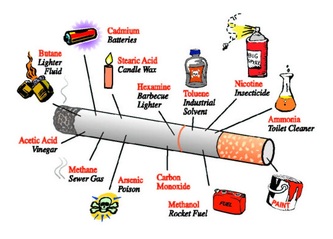


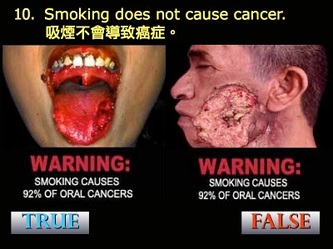

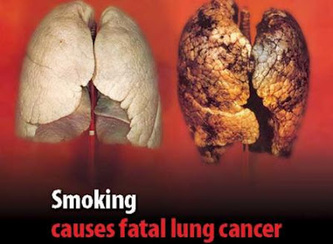
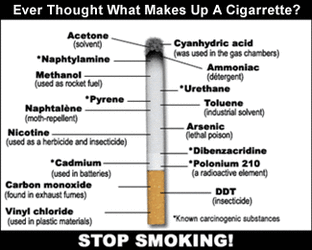
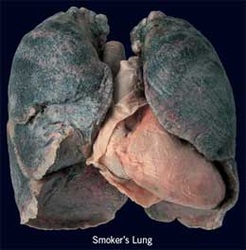
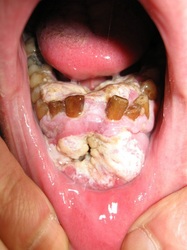




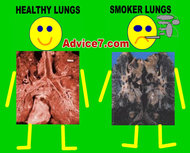


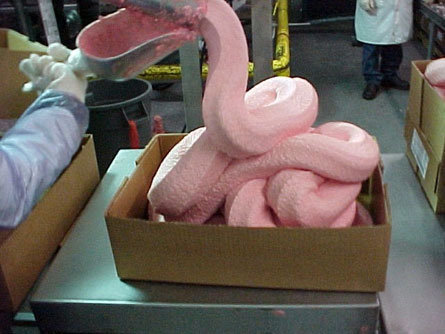




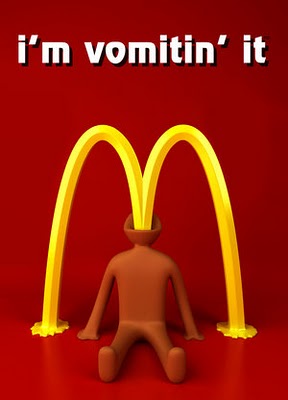


 RSS Feed
RSS Feed